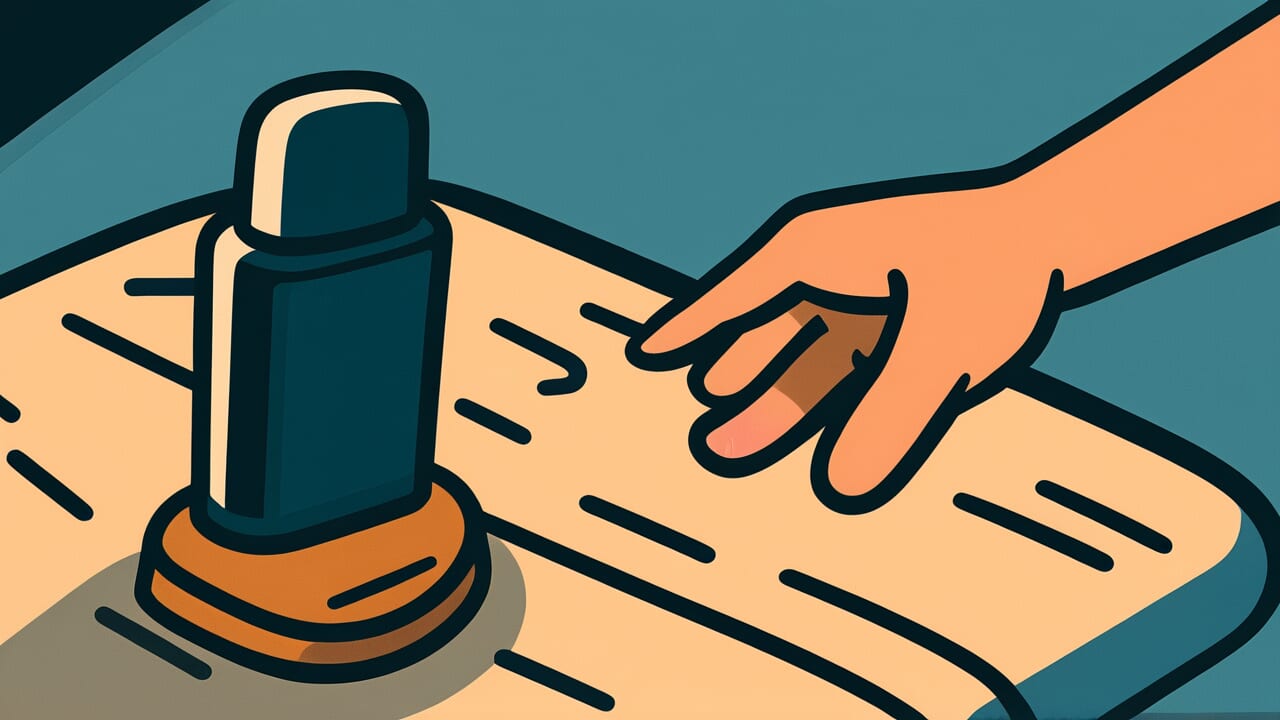How to Read “Turn over the back of a nail”
Kugi no ura wo kaesu
Meaning of “Turn over the back of a nail”
“Turn over the back of a nail” is a metaphor for betraying someone after forgetting their kindness. It refers to forgetting the favors or kindness you received from someone and then acting in a way that repays their goodness with harm.
This proverb is especially used to describe acts of betrayal against someone you had a trusting relationship with. It’s not just about breaking a promise.
It criticizes actions where you turn your back on or harm someone who helped you, despite having received their kindness.
Even today, this saying applies to situations like suddenly quitting a company that trained you to join a competitor. Or abandoning a friend who helped you when they’re in trouble.
By using the familiar image of a nail, the proverb powerfully emphasizes how wrong such ungrateful behavior is. It highlights actions that go against the moral principles people should uphold.
Origin and Etymology
The origin of “Turn over the back of a nail” doesn’t appear in clear historical records. However, we can make interesting observations from how the phrase is constructed.
A nail has a clear front and back. The front shows the head, firmly holding things together. But turning over the back means reversing that fixed relationship.
A relationship based on gratitude is like a strong bond fixed by a nail. When someone repays kindness, the relationship stays stable.
But turning over the back of the nail means completely flipping that supposedly fixed relationship upside down.
In traditional Japanese craftsmanship, even handling a single nail required careful attention. In construction, hammering a nail in the wrong direction affects the building’s strength.
The expression “turning over the back” carries the meaning of a serious mistake that reverses the proper direction.
By comparing the foundation of human relationships—gratitude—to a concrete tool like a nail, this proverb vividly expresses the abstract act of betrayal. It reflects the sensitivity of Japanese people in creating meaningful sayings.
Usage Examples
- I can’t believe he would turn over the back of a nail after receiving so much help from that senior colleague
- He betrayed his mentor’s expectations and turned over the back of a nail with his actions
Universal Wisdom
The proverb “Turn over the back of a nail” has been passed down because it addresses trust and betrayal in human relationships. These are timeless, universal themes.
Humans are social creatures. Everyone lives with help from others. The invisible bond of gratitude forms the foundation of human society.
But at the same time, humans have desires to prioritize their own interests. When these two forces conflict, people face a choice.
What’s interesting is why betrayal is condemned so strongly. It’s because betrayal doesn’t just break promises.
It shakes the very foundation of human relationships—trust. Betraying someone who helped you is like destroying the ground that supports you.
This proverb acknowledges human weakness while teaching that there are still moral principles we must uphold. Repaying gratitude actually protects your own humanity.
Our ancestors understood a life truth: betraying trust for short-term gain leads to losing your place in the long run. Taking care of gratitude ultimately means taking care of yourself.
This deep insight is embedded in the proverb.
When AI Hears This
When you observe a nail physically, it has a nearly cylindrical, axially symmetric shape. This means if you rotate it around its central axis, neither its appearance nor function changes.
In physics, this is called “rotational symmetry.” It’s the same principle as spinning a cup without spilling its contents.
What’s important here is the relationship to energy conservation. In physics, “work” is defined as “force × distance moved.” Rotating a nail does require energy.
But the nail’s state after rotation is completely identical to before. In other words, the system’s energy state hasn’t changed.
Except for energy lost as friction heat, this action thermodynamically produces nothing.
Even more interesting is how this proverb shows the meaninglessness of a “reversible process.” Rotate a nail 180 degrees and it returns to its original state. Rotate it 360 degrees and even more so.
If you input energy but the system returns to its original state, thermodynamically it’s equivalent to “doing nothing.” It’s like an engine completing one rotation and returning to its starting position without the car moving forward.
This proverb intuitively captures two physical concepts—shape symmetry and wasted energy—through the everyday example of a carpenter’s tool.
Lessons for Today
“Turn over the back of a nail” teaches us modern people the importance of integrity in human relationships.
In today’s world, relationships are fluid. Job changes and environmental shifts are normal. But this makes not forgetting gratitude even more valuable.
Your current position, your skills, and your network—weren’t they gained with someone’s help?
This proverb teaches that repaying gratitude actually enriches your own life. People naturally gather around those who don’t forget kindness and maintain grateful hearts.
On the other hand, those who chase only profit and disregard gratitude may gain temporarily. But in the long run, they become isolated.
What matters is not seeing gratitude as a burden, but cherishing it as proof of human connection. Even if you can’t repay perfectly, don’t forget your thankfulness.
Face relationships sincerely within your capacity. That attitude builds your own asset of trust.



Comments